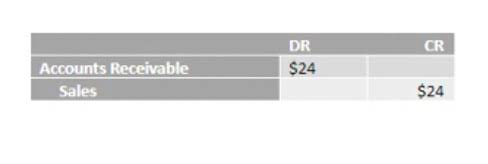
Shareholders, analysts and potential investors use the statement to assess a company’s profitability and dividend payout potential. The statement of retained earnings is most commonly presented as a separate statement, but can also be appended to the bottom of another financial statement. Up-to-date financial reporting helps you keep an eye on your business’s financial health so you can identify cash flow issues before they become a problem.
Unlike net income, which can be influenced by various factors and may fluctuate significantly between periods, retained earnings offer a more consistent and reliable indicator of the business’s financial health. A strong retained earnings figure suggests that a company is generating profits and reinvesting them back into the business, which can lead to increased growth and profitability in the future. If a company has no strong growth opportunities, investors would likely prefer to receive a dividend. Therefore, the company must balance declaring dividends and retained earnings for expansion. Retained earnings provide you with insight into your cumulative net earnings.
Retained Earnings Formula and Calculation
Beginning retained earnings are then included on the balance sheet for the following year. Retained earnings are usually considered a type of equity as seen by their inclusion in the shareholder’s equity section of the balance sheet. Though retained earnings are not an asset, they can be used to purchase assets in order to help a company grow its business. You’ll also need to produce a retained earnings statement if you’re following GAAP accounting standards. Retained earnings are part of the profit that your business earns that is retained for future use. In publicly held companies, retained earnings reflects the profit a business has earned that has not been distributed to shareholders.
- Thus, it can provide a general indication of how management wants to use excess funds.
- Retained earnings refer to the historical profits earned by a company, minus any dividends it paid in the past.
- Retained earnings offer internally generated capital to finance projects, allowing for efficient value creation by profitable companies.
- Businesses need to prepare a statement of retained earnings for both internal decision making and for the dissemination of information to external interested parties.
- The company may use the retained earnings to fund an expansion of its operations.
- Any time a company has net income, the retained earnings account will increase, while a net loss will decrease the amount of retained earnings.
If an investor is looking at December’s financial reporting, they’re only seeing December’s net income. But retained earnings provides a longer view of how your business has earned, saved, and invested since day one. If your business currently pays shareholder dividends, you simply need to subtract them from your net income.
Management and Retained Earnings
A maturing company may not have many options or high-return projects for which to use the surplus cash, and it may prefer handing out dividends. Next, subtract the dividends you need to pay your owners or shareholders for 2021. That said, calculating your retained earnings is a vital part of recognizing issues like statement of retained earnings that so you can rectify them. Remember to interpret retained earnings in the context of your business realities (i.e. seasonality), and you’ll be in good shape to improve earnings and grow your business. If you calculated along with us during the example above, you now know what your retained earnings are.
